
SHA256 and other hash functions are supported in SAS 9.4 and SAS Viya. It's better than MD5 as a cryptographic hash!

SHA256 and other hash functions are supported in SAS 9.4 and SAS Viya. It's better than MD5 as a cryptographic hash!

Watching the news recently it occurred to me that many of the stories involved data in some way. Many of the reports from the recent Consumer Electronics Show showcased products to enable users to create and use ever-growing personal collections of data. Want data on how well you sleep? No

Starting with SAS 9.4, not only will SAS administrators see lots of processes running on your operating system supporting the various SAS servers (such as SAS Metadata server), you will also see two new processes that have a description of “agent” running. Agents are software processes responsible for tasks such

Late last month, while many of us were sipping eggnog and decking halls with boughs of holly, SAS released the 13.1 version of its analytical products. Readers of Maura Stokes' newsletter, SAS Statistics and Operations Research News (Nov 2013), have already been alerted to new features in products such as
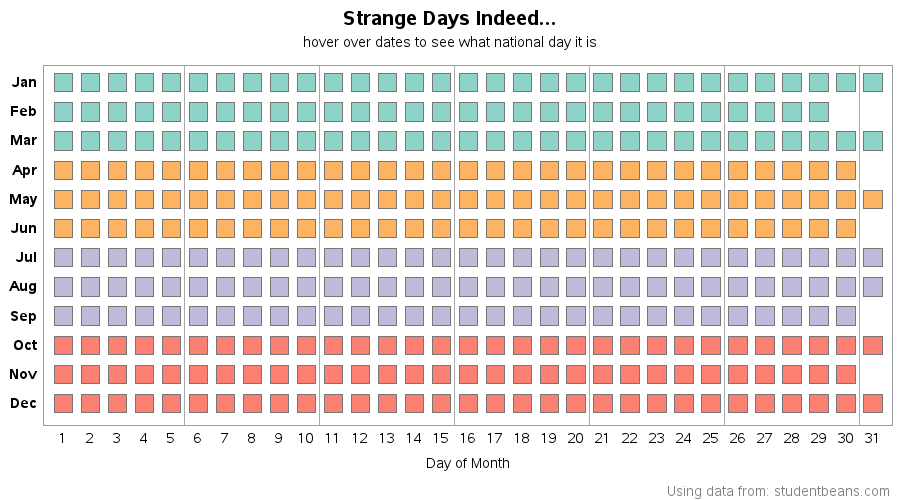
Every day of the year is an official 'national day' for something - here's a SAS chart to help you find which bizarre 'national day' falls on your birthday! I recently read an article that lists weird and unconventional national days. It was very interesting, but I found the data

Vector languages such as SAS/IML, MATLAB, and R are powerful because they enable you to use high-level matrix operations (matrix multiplication, dot products, etc) rather than loops that perform scalar operations. In general, vectorized programs are more efficient (and therefore run faster) than programs that contain loops. For an example

When you create maps, you are typically plotting data for analytics -- but you can also use SAS to create 'pretty' maps for background decorations (for posters, slides, presentations, etc). This blog shows you a few examples... A few years ago I noticed that the CNN Situation Room had a decorative

Software performance is a complex topic. The answer to every question depends—depends on hardware, depends on operating system, architecture, time of day, number of users and so on. (Margaret Crevar gave us some insight into that complexity in her January 2013 post Improving performance: Understand the problem.) That’s why we

Do you make New Year’s Resolutions? Do you typically achieve them? Studies say that only about 40-50% of us make New Year’s Resolutions each year, and unfortunately very few of us actually succeed. Why is that? Were they unrealistic? Did we prepare to succeed? Were we ready to make a
Following Sanjay's cue (see “R U Graphing with SAS”), I tried creating data driven multi-cell graphs using R. I played with the lattice and ggplot2 packages. I found ggplot2 simpler to understand and use than lattice, but there are probably some trades offs. Data-driven layouts are referred to as 'faceting'

In 2013 I published 110 blog posts. Some of these articles were more popular than others, often because they were linked to from a SAS newsletter such as the SAS Statistics and Operations Research News. In no particular order, here are some of my most popular posts from 2013, organized
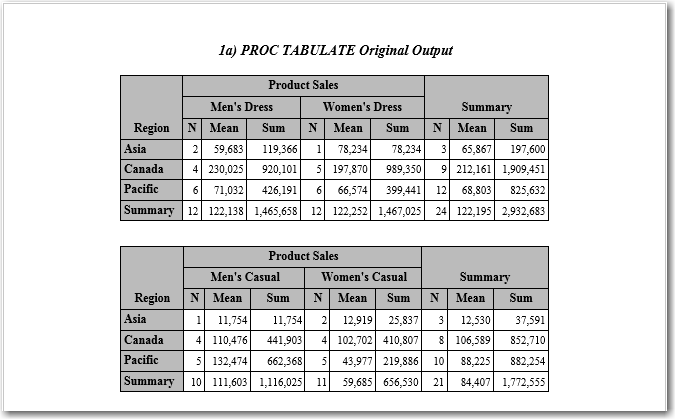
Sure, you have a great looking table and you produce it with PROC TABULATE. And then, bam! Your boss comes along and decides that since your output looks so good in Word, that he’d like that boilerplate paragraph inserted automatically. Currently, you produce the tables and then pass the RTF
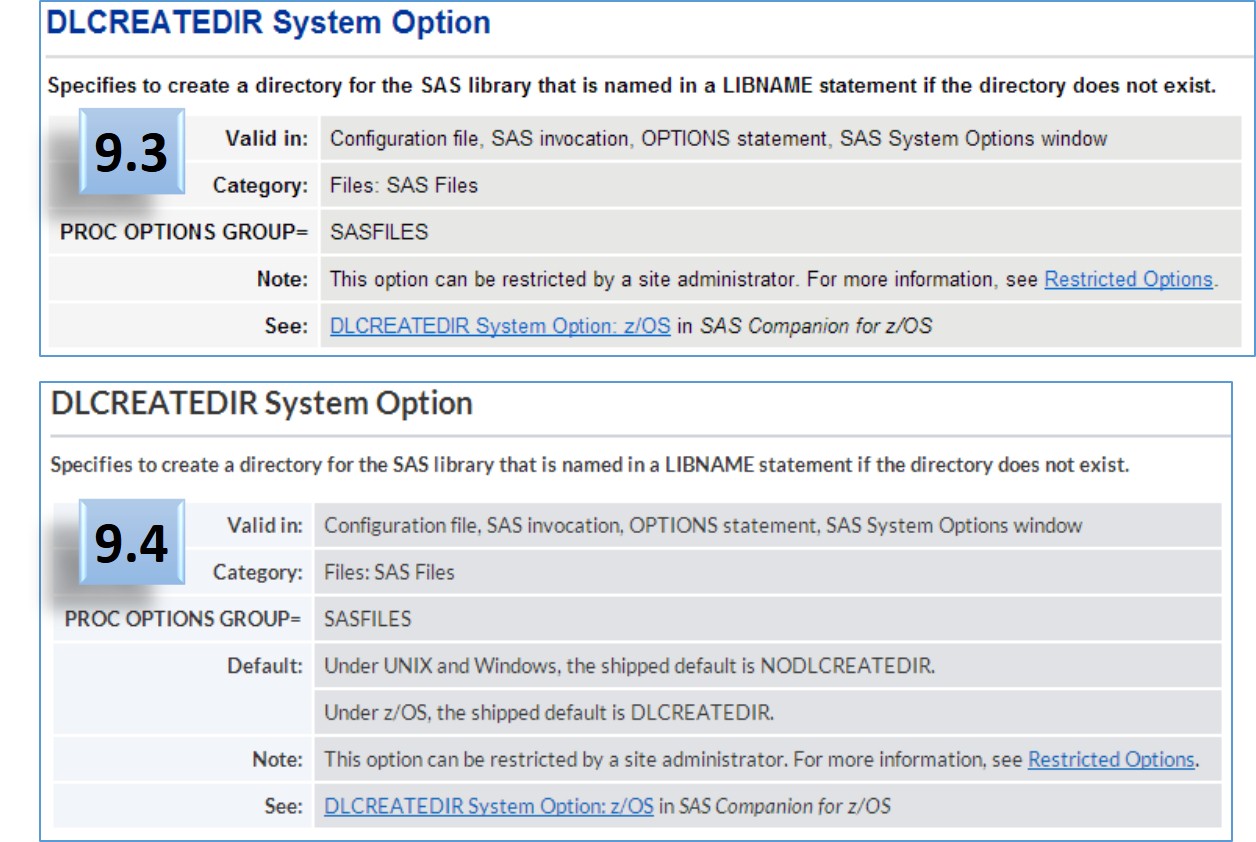
Because I began my SAS career in the Publications division, I like to think that I have a keen eye when it comes to SAS documentation. When I first visited the SAS 9.4 online documentation, I immediately noticed that it had a different look. Examine the image below; can you
Recently a user new to GTL and SG procedures asked how to create a Bland-Altman graph on the SAS Communities site. He included an image of the resulting graph to indicate what he wanted, I described to him how that graph can be created, but since he is new to the art

Welcome to the SAS administrator blog series for 2014! Back in early 2013, the most popular posts on the SAS Users Groups blog were all about the roles and responsibilites of SAS administrators. I was reminded of them during a presentation at WUSS 2013 in Las Vegas. Carey Smoak of
In my previous post I described the new Polygon plot statement that is included with the SAS 9.4M1 release. So, a valid question is - what is my motivation for discussing the new features in SAS 9.4M1 when most users are at SAS 9.3 or SAS 9.2 versions? Here are a

In November, I resumed the “it’s all about the data” series, laying a foundation for helping SAS administrators understand how SAS stores and manages data for use in business intelligence and analytic applications. For this article, I culled our internal Thotwave knowledge base and queried our consultants who get questions
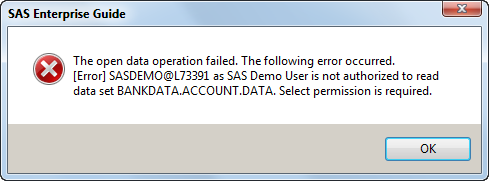
My children learned this skill early in life: when you want to secure permission for a questionable activity (say, "watch 5 hours of Phineas and Ferb" or "eat a bowl of candy for breakfast"), you should approach the most lenient adult in the household. In my early days of fatherhood,
The SAS 9.4 Maintenance 1 release is now shipping to users. This is great news for GTL and SG procedures users as this release includes some useful new features. Some of these are in direct response to your requests, and others are enhancements that we think you will come to like.
Often we have situations where the category values on the graph have long character strings. This is often the case when graphing survey responses to questions. The questions may be sentences, sometimes moderately long. With SAS 9.4, GTL and SG now support the ability to display tick values split over
If there's anyone who represents the global nature of SAS software, it's Falko Schulz. He's a German who lives in Brisbane, Australia while he works for SAS R&D based in Cary, NC. Falko works on the team that produces SAS Visual Analytics, specifically the "explorer" portion of the tool. He
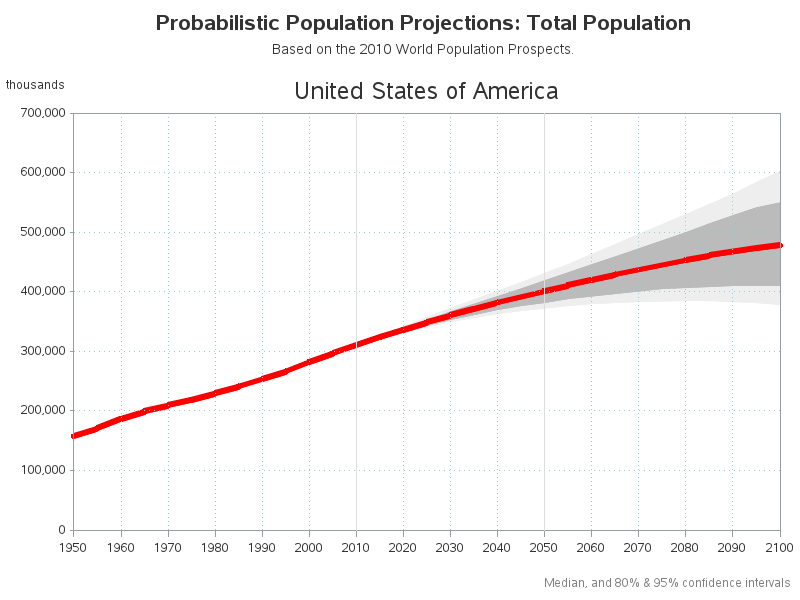
The farther you try to forecast into the future, the less certain you are -- how can you represent that graphically? One way is to draw a shaded/colored "confidence interval" around your forecast line, but this is something a lot of SAS users have trouble with. That's why I decided to create
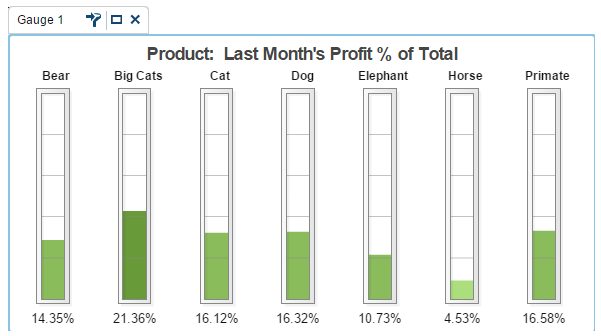
Being so close before Christmas I thought it would be a good idea to see what route Santa Claus is planning this year. Not just because I'm living in Australia and Santa usually comes in t-shirts & shorts but also because it's a long way to get down here. So

We want to extend a huge thank you to everyone who donated their leftover (and excess) Halloween candy this year, you outdid yourselves!! We tipped the scales at more than 220 pounds of candy- 65 more pounds than we collected last year! Wondering what happened to all that Halloween candy?

O Christmas tree, O Christmas tree, Last year a fractal made thee! O Christmas tree, O Christmas tree, A heat map can display thee! O tree of green, adorned with lights! A trunk of brown, the rest is white. O Christmas tree, O Christmas tree, A heat map can display
Creating a Bar Chart with a table of statistical data aligned with the bars is a popular topic. With SAS 9.4, creating such graphs gets easier with the new AXISTABLE statement in GTL and SG procedures. But some use cases can flummox the latest gizmos. Such is the case I ran into recently. Here
As I crossed the finished line, I could feel the tears welling up. “Don’t do it," I thought. "Athletes don’t cry." Somehow, I managed to pull myself together, but instead of my usual post-race celebration of high fives and cheering on other runners, I walked to the race result board

Recently a SAS/IML programmer asked a question regarding how to perform matrix arithmetic when some of the data are in vectors and other are in matrices. The programmer wanted to add the following matrices: The problem was that the numbers in the first two matrices were stored in vectors. The
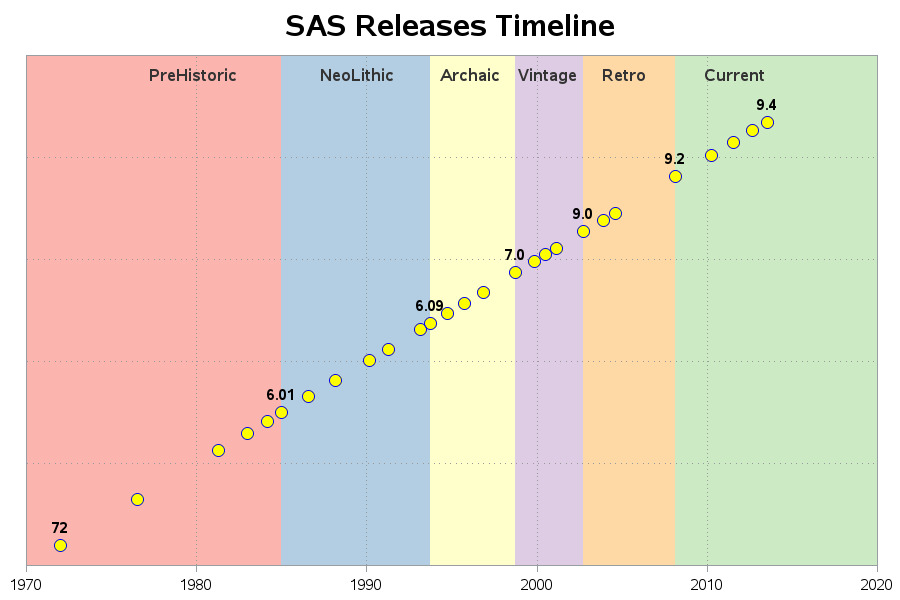
Data on punched-cards, SAS software delivered on tape, jobs in the queue on the mainframe, printouts on green-bar paper ... we really appreciate all our SAS users, but if any of the above are part of your "SAS memories" we especially appreciate you! I guess I'm a computer geek, because
Last week I covered some of the interesting graph-related papers presented at WUSS. There were quite a few, so I broke up the report into two parts. Here is the second installment. In the paper Creating Graphical Patient Profiles using SAS by William Garner of Gilead Sciences, the author describes how to create